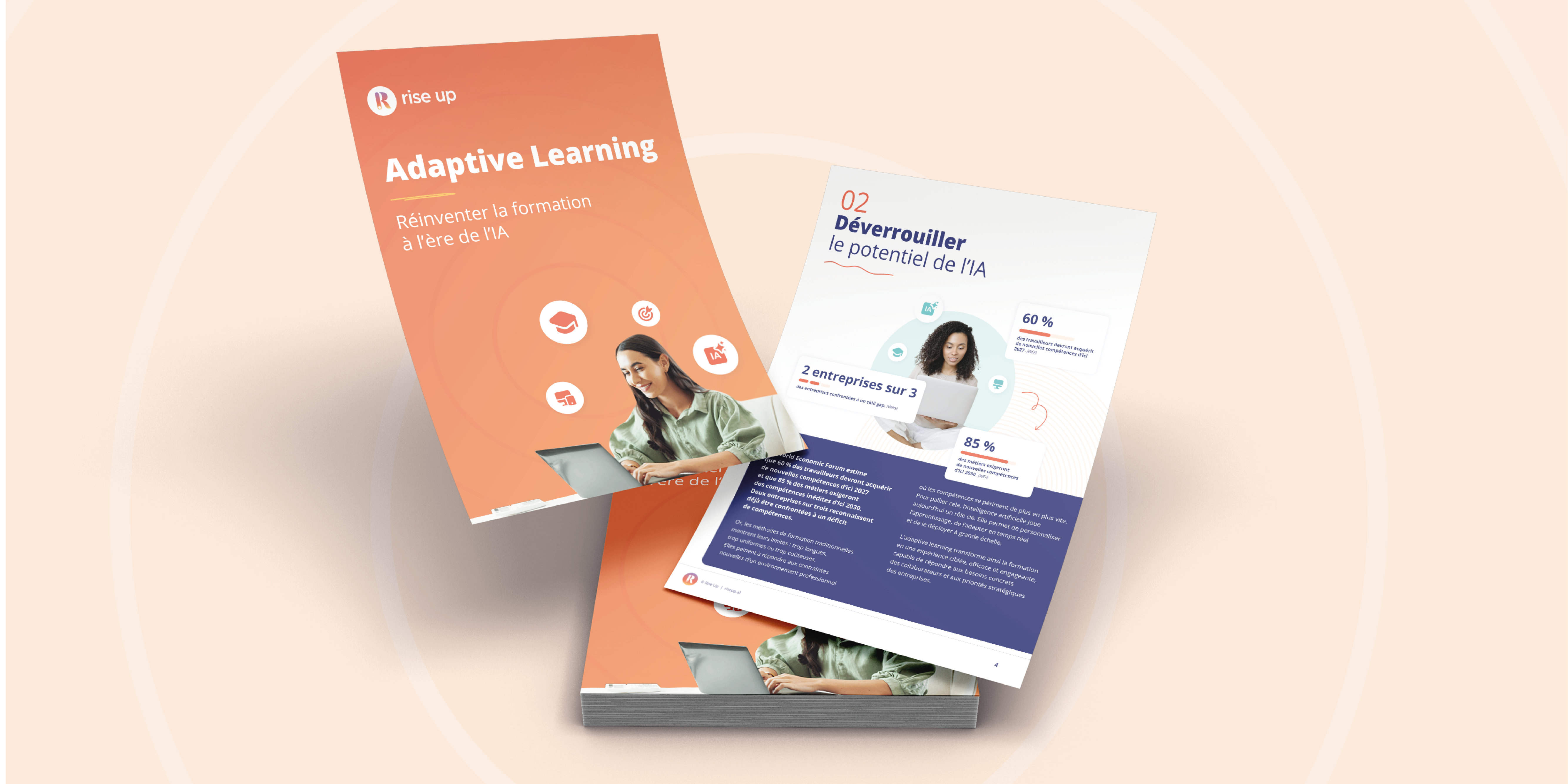Blended learning and instructional design: adapting training courses in the wake of the pandemic
7 minutes of reading | 2022-07-07
All sectors of activity have more or less taken a hit as a result of the pandemic. Back in the early days, companies were forced to embrace remote working in the blink of an eye and had to make some staff redundant. Faced with a completely unprecedented situation, they had to take drastic measures very quickly, with no idea what the future held.
Although restrictions have gradually been eased, many employees are still engaged in remote work. What’s more, faced with the looming economic challenges – including unprecedented rises in energy bills, food prices and fuel costs – it has never been more important for companies to remain competitive and ensure workforce resilience. The key to this? High-quality, customised training.
With this in mind, how can we adapt training to this new age of remote working? Could blended learning – a training method that combines several different learning methods – hold the answer to all our problems?

How working from home is transforming professional training
During the bans on household mixing during the pandemic, it quickly became apparent that in-person training had its limitations. In the shift to remote working, some companies were forced to rethink their training programmes altogether. Moreover, the restrictions that arose during the pandemic (office closures, social distancing, mask wearing, etc.) raised serious questions about the future of in-person training. But there was one solution that really proved its worth: digital training.
It’s hardly surprising that sales of LMS platforms skyrocketed during the first lockdown. In fact, lots of companies decided to adapt some, if not all, of their in-person training into e-learning modules to ensure business as usual – especially given the uncertainty around how the crisis would evolve. Little did we know that the world of work as we knew it would be completely reimagined…
One thing that has become crystal clear is that employee training should not be neglected during times of crisis. In fact, training employees in new technologies and industry advances can ensure that companies remain competitive and resilient in the face of future crises.
Digitalisation doesn’t mean a lack of human contact
Distance learning, much like remote working, can instil fear in companies that have never tried it before, especially as many have found themselves in survival mode in recent times. This fear is not completely unfounded, as these ways of working and learning haven’t always had the best reputation. E-learning, in particular, has been subject to criticism.
Since it emerged in the 2000s, e-learning has quickly become embedded in company training programmes. Yet, while it was once praised as a way of learning that was set to revolutionise the world of professional training with its practicality and considerable time-saving abilities, e-learning hasn’t quite been met with unanimous approval. Over time, it hasn’t always lived up to the expectations of training departments. A high abandonment rate, learner isolation, a lack of motivation and poorly consolidated knowledge are just some of the criticisms levelled at online training.
Given these mixed results, many complementary learning methods have appeared over the past few years with the aim of resolving these challenges. In recent times, distance learning has undergone a real transformation, and the idea that it doesn’t involve any human interaction is a common misconception.
The good news is that, nowadays, learners are no longer isolated behind their computer screen – quite the opposite, in fact! Teaching methods like social learning or collaborative learning enable employees to interact throughout their training course and even learn more quickly as a result.
Trainers are also placing much more emphasis on incorporating learner support in their training courses, which means that learners feel less isolated. They can enjoy direct contact with their trainer, not to mention personalized support, which is becoming increasingly common.
Could blended learning hold the answer?
While blended learning has always seemed like an ideal middle ground, in that it bridges the gap between in-person sessions and e-learning modules, it has really come into its own post-pandemic. In fact, for companies fearful about launching into 100% e-learning, blended learning offers an excellent compromise, enabling them to keep their in-person training and simply add online modules. Moreover, in a period when social interactions have been few and far between, being able to share ideas with other learners has become essential.
a) Recap: what is blended learning?
Also known as “hybrid learning”, blended learning is a method that blends several types of learning, taking into account the specific teaching objective, target audience and training context. In reality, what makes blended learning so popular among companies and employees is that it combines the most popular aspects of in-person training and e-learning.
The main objective of blended learning is to make training more impactful by employing the method that gets the most out of each learner and is best adapted to their needs. For example, one common framework is to deliver theoretical training online while reserving in-person lessons for practical training. This way, learners still get to interact with one another throughout the training course and are highly engaged with the content.
b) Why implement blended learning post-pandemic?
It’s well known that hybrid lessons enable employees to learn additional skills more effectively, not least because they can maintain social interactions, benefit from personalised learner support, fit training around their schedules and reinforce what they have learned.
Moreover, by borrowing the best parts of distance learning and in-person sessions, blended learning combines synchronous (live) and asynchronous (pre-recorded) training.
For example, in the new post-Covid era of work, if a company wants to organise in-person sessions to share experiences or put an idea into practice, they can simply choose a day of the week when their employees will be in the office to run these group exercises. The rest of the time, learners can study their e-learning modules from home.

If a company wants to make their training more dynamic, it can even organise virtual classes to ensure that learners can all get together and learn at the same time. It can also suggest distance-learning exercises via the discussion forum of its LMS platform. This ensures a blend of synchronous and asynchronous learning methods, resulting in a more comprehensive and meaningful training process for employees.
To sum up, the flexibility of blended learning and its various learning methods, created with the aim of enhancing learner engagement, are perfectly suited to this period of unpredictability. And, if we’ve learned anything over the past couple of years, it’s that while we can’t predict the future, we can prepare for it.
Professional training post pandemic
As well as forcing companies to completely rethink how they approach working and training, the pandemic had had an enormous impact on many sectors on the economy. Finding themselves in full survival mode, organisations were forced to evolve and adapt as quickly as possible to respond to these upheavals.
They now need to make sure that their training has longevity. In other words, if companies want to come through the current economic downturn unscathed, they need to focus on investing in the skills that employees already have and can put into practice. And to upskill, employees need training. Thanks to its practicality and combination of the best teaching methods, blended learning seems to be the best way of achieving this.
Continue your research with our expert guide: 'learning in the flow of work' to discover how you can adopt a learning culture.





